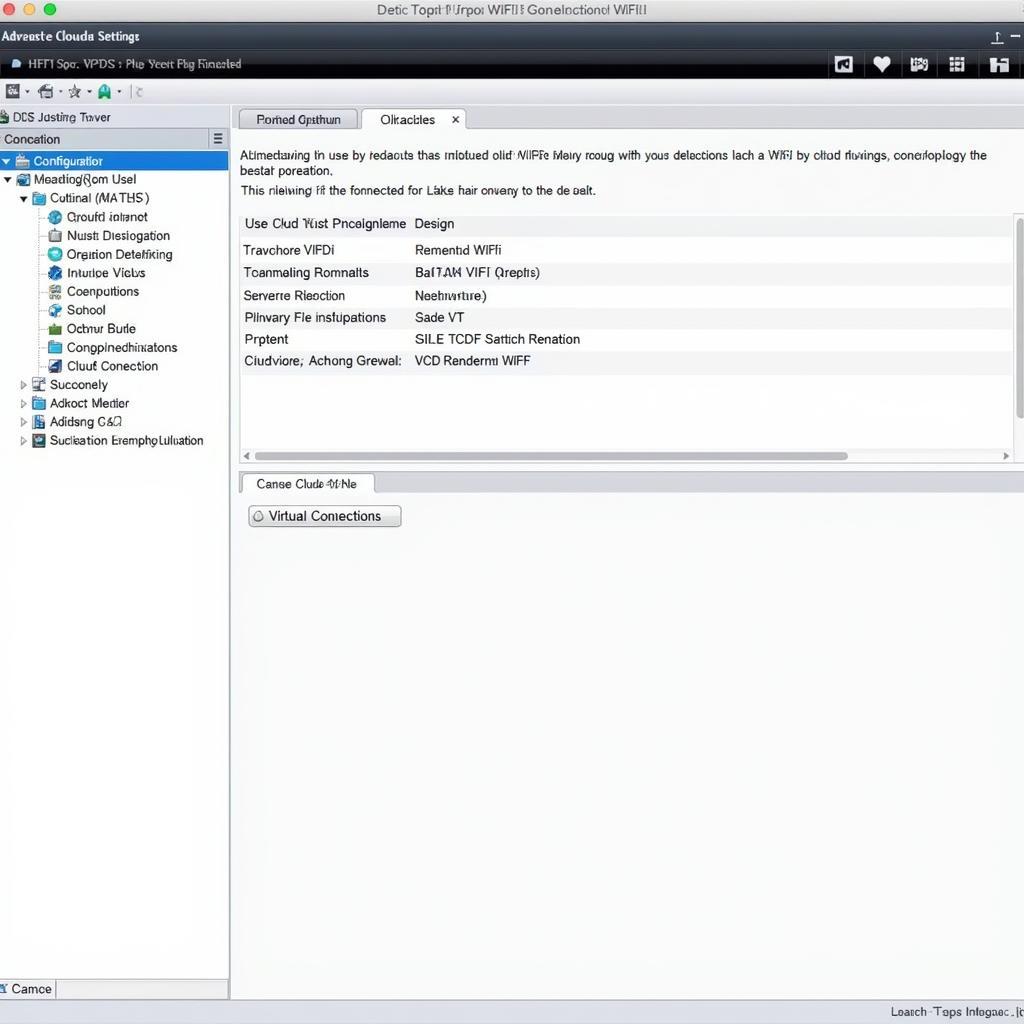Using VCDS to check your timing chain can save you time and money by identifying potential issues early. Understanding how to interpret the data is crucial for accurate diagnostics and effective repairs. This guide will walk you through the process, covering everything from the basics to advanced techniques.
What is a Timing Chain and Why Should I Check It?
The timing chain is a vital component of your engine, responsible for synchronizing the crankshaft and camshaft rotations. This precise timing ensures that the engine’s valves open and close at the correct moments for optimal performance and fuel efficiency. A worn or stretched timing chain can lead to serious engine problems, including misfires, reduced power, and even catastrophic engine damage. Regularly checking the timing chain with VCDS is a proactive measure to prevent costly repairs.
Similar to vcds camshaft position sensor test, checking the timing chain involves using diagnostic software to analyze sensor data. This allows for a non-invasive assessment of the timing chain’s condition.
How to Check Timing Chain with VCDS
Using VCDS to check your timing chain involves accessing specific measuring blocks within the engine control module. These blocks provide data on the camshaft and crankshaft positions, allowing you to assess the timing chain’s condition.
- Connect your VCDS interface to the vehicle’s OBD-II port.
- Turn the ignition on without starting the engine.
- Open the VCDS software and select the appropriate vehicle model.
- Navigate to the “Engine” control module.
- Access the “Measuring Blocks” function.
- Identify the measuring blocks related to camshaft and crankshaft timing. These block numbers may vary depending on the specific engine. Consult your vehicle’s repair manual or online resources for the correct block numbers.
check timing with vcds requires a thorough understanding of the specific measuring blocks for your vehicle’s engine.
Interpreting the Results: What to Look For
Once you have accessed the relevant measuring blocks, you need to interpret the data to determine the timing chain’s condition. Significant deviations from the specified values indicate a potential problem. Look for discrepancies between the camshaft and crankshaft positions, which suggest a stretched or worn timing chain.
“Regularly monitoring timing chain data with VCDS allows you to proactively address potential issues, preventing costly engine damage down the road,” says John Miller, a certified automotive technician with over 20 years of experience.
Advanced VCDS Timing Chain Diagnostics
For more advanced diagnostics, you can utilize the graphing function within VCDS. This allows you to visualize the camshaft and crankshaft positions over time, providing a more detailed analysis of the timing chain’s behavior.
vcds camshaft adjustment can sometimes be necessary if timing issues are detected. However, this should only be performed by a qualified technician.
When to Replace Your Timing Chain
If your VCDS diagnostics reveal significant deviations in timing, it’s crucial to address the issue promptly. A stretched or worn timing chain can lead to severe engine damage if left unchecked. Consult with a qualified technician to determine the best course of action.
vcds cam timing provides valuable insights into the health of your engine’s timing system.
Conclusion
Using VCDS to check your timing chain is a valuable preventative maintenance measure. By understanding how to interpret the data, you can identify potential issues early and prevent costly repairs. Regular checks can significantly extend the life of your engine and ensure optimal performance. While VCDS is a powerful tool, remember that professional diagnosis and repair are essential for complex issues. how to check timing with vcds free verizon is a popular search term, but it’s important to note that a genuine VCDS system is necessary for accurate results.
FAQ
-
Can I check my timing chain myself with VCDS?
Yes, with the proper knowledge and tools. -
What are the signs of a bad timing chain?
Rough idling, misfires, and reduced engine power. -
How often should I check my timing chain with VCDS?
Regularly, as part of your preventative maintenance schedule. -
What should I do if my VCDS shows a problem with my timing chain?
Consult a qualified technician. -
Is VCDS the only way to check a timing chain?
No, but it’s a highly effective and non-invasive method. -
Can I damage my car by using VCDS incorrectly?
Unlikely, but always follow instructions carefully. -
Where can I find more information on using VCDS?
Online forums, tutorials, and the official Ross-Tech website.
For assistance, contact us via Whatsapp: +1 (641) 206-8880, Email: CARDIAGTECH[email protected] or visit us at 276 Reock St, City of Orange, NJ 07050, United States. We have a 24/7 customer support team. You may also find helpful information in our other articles on camshaft position sensor testing and camshaft adjustment using VCDS.


